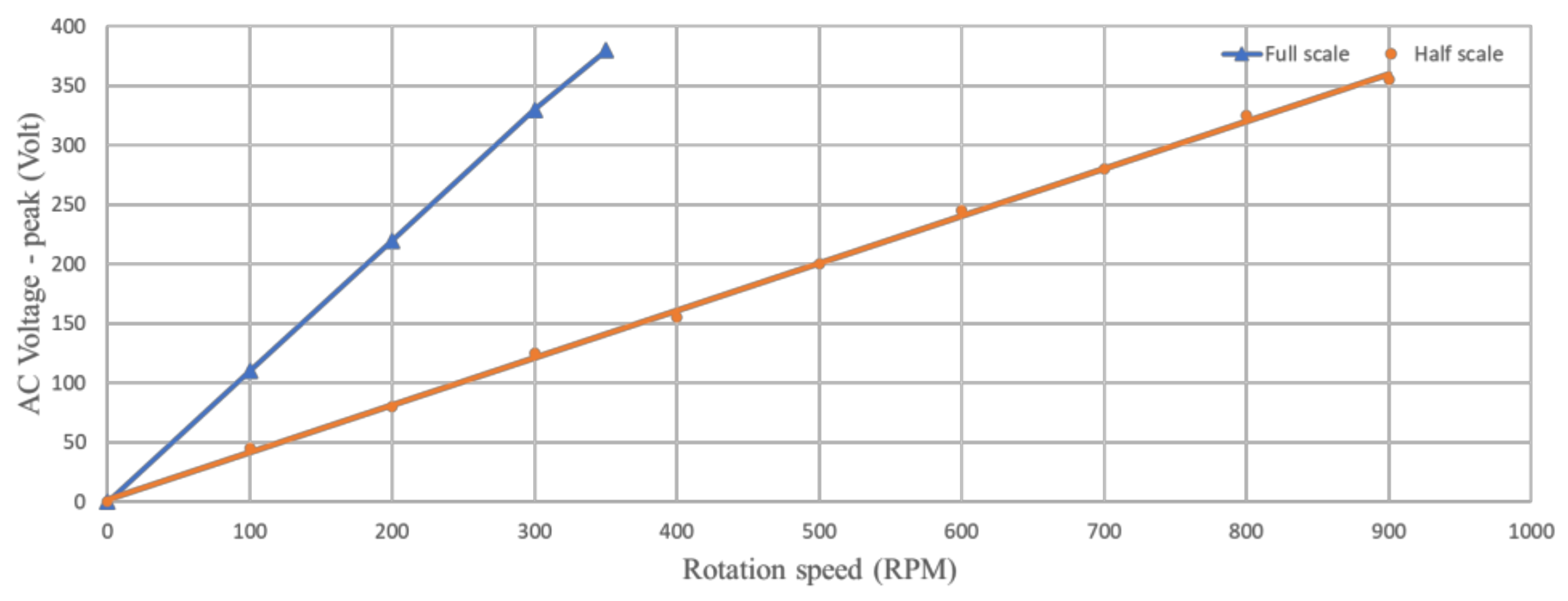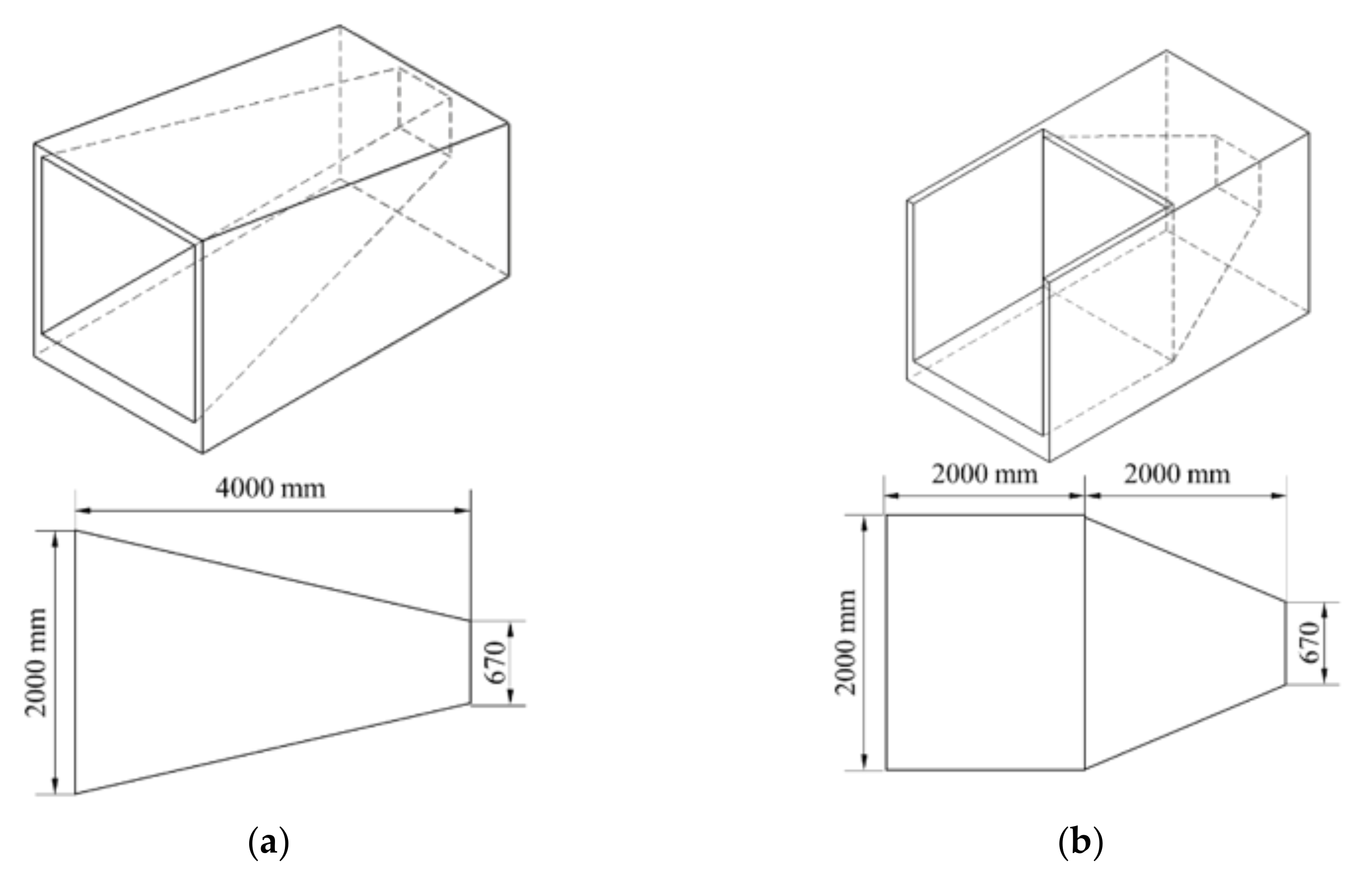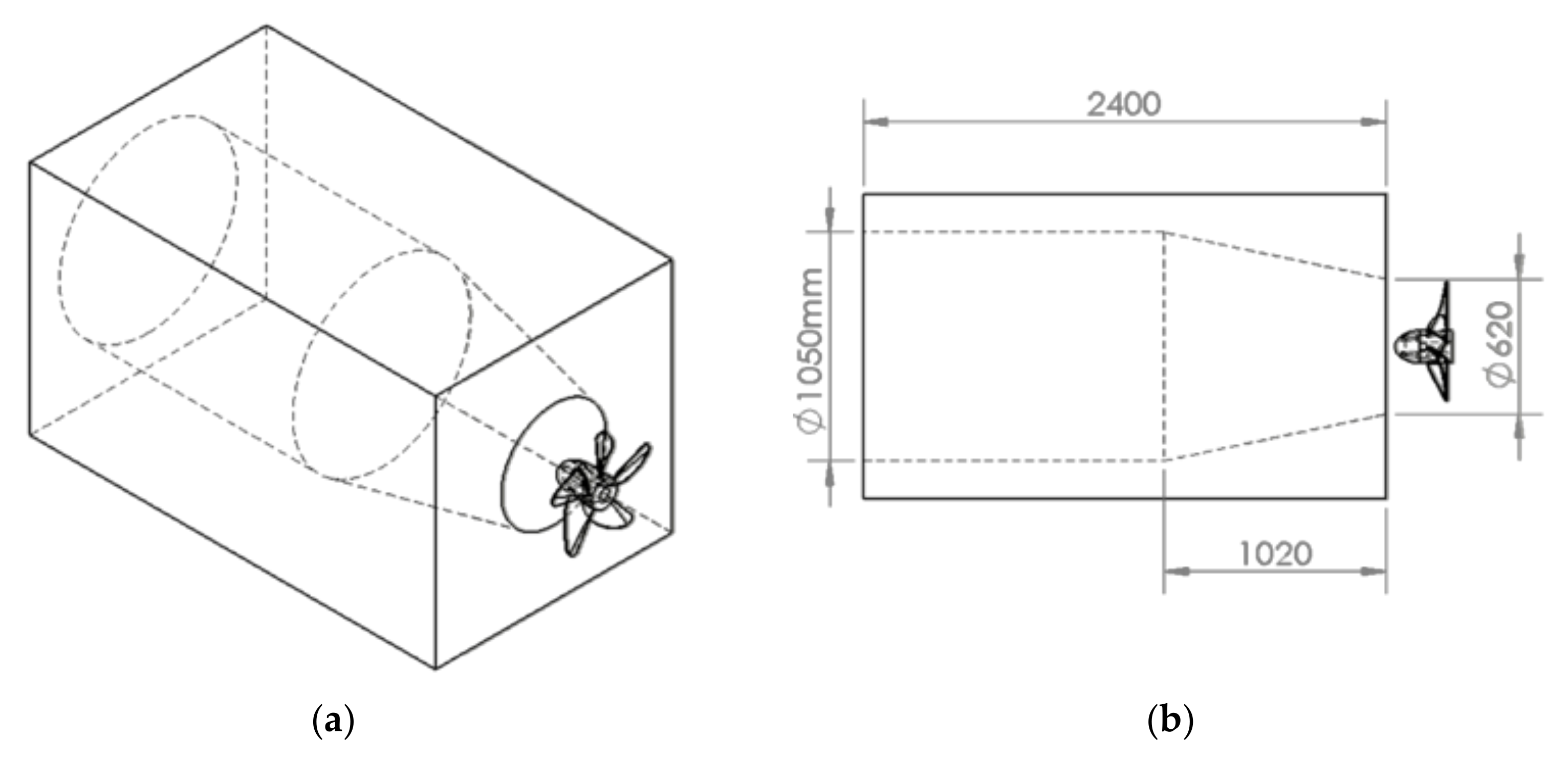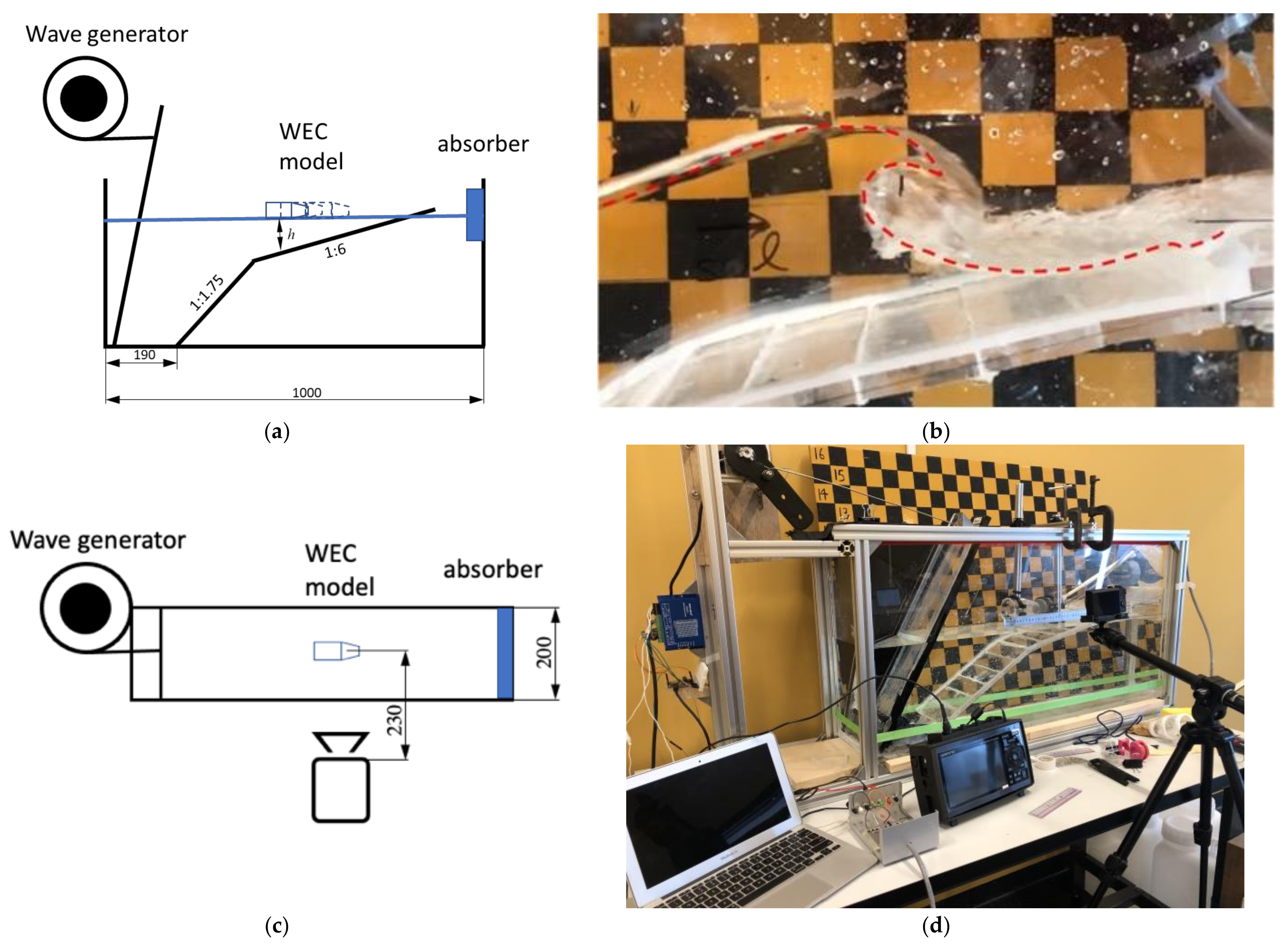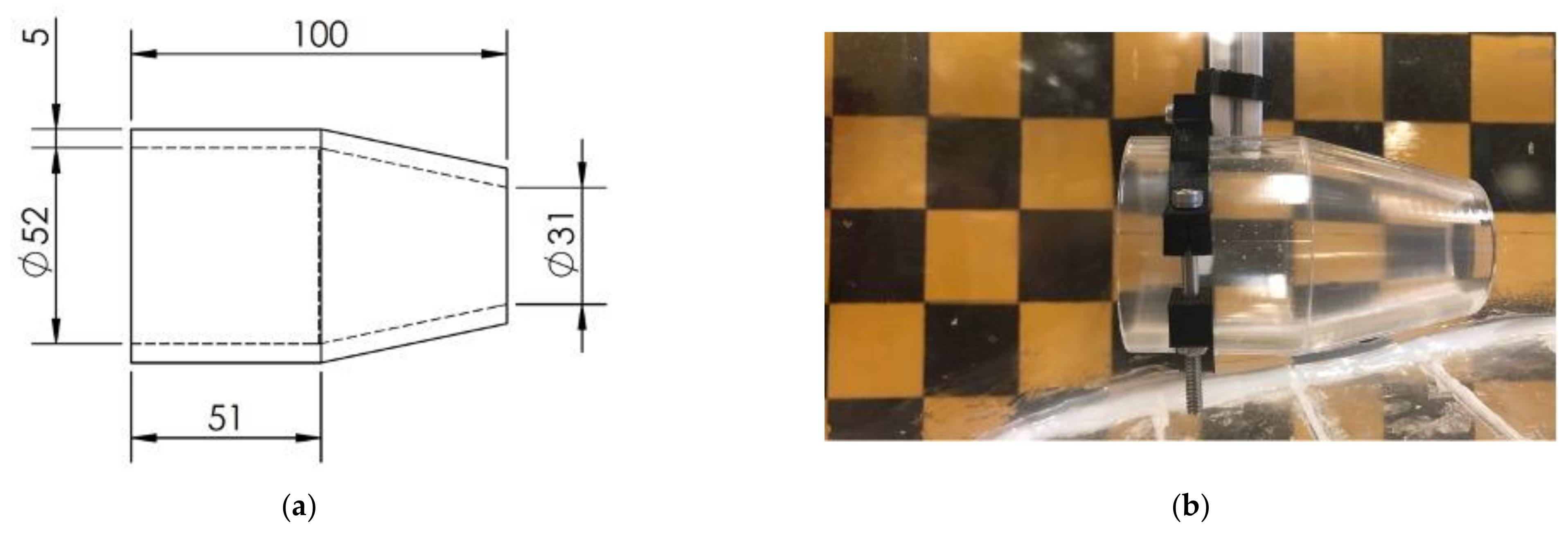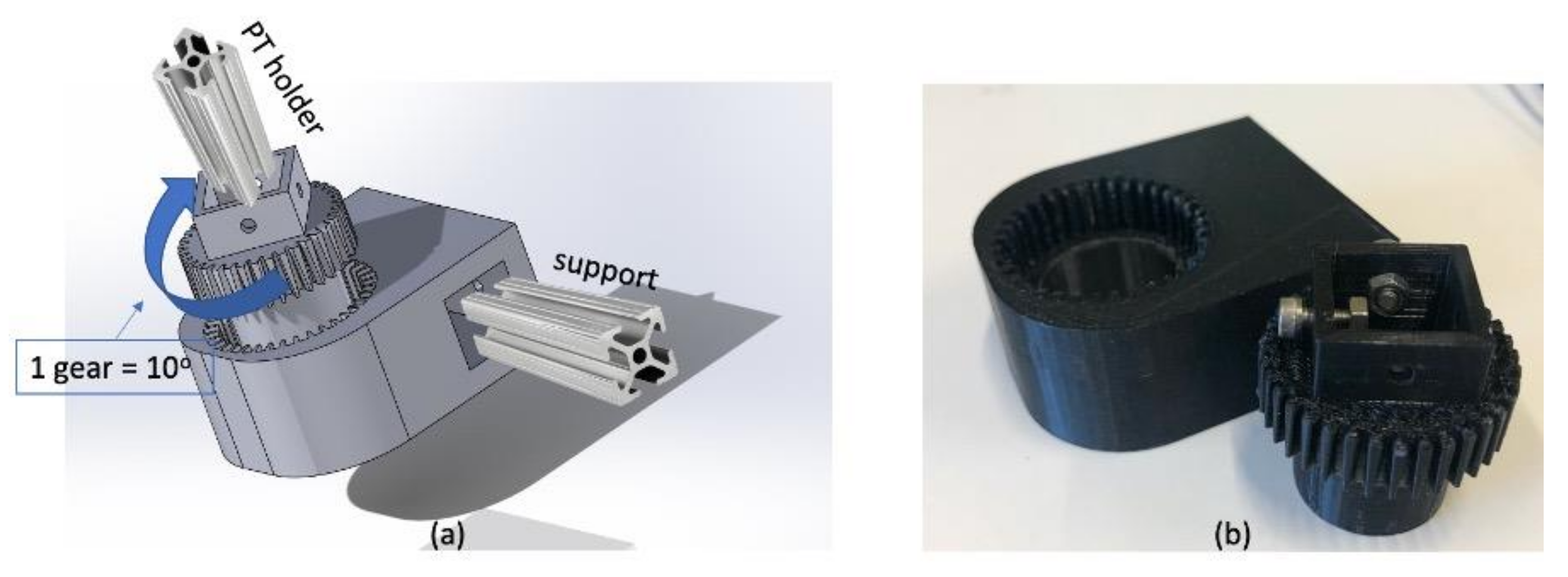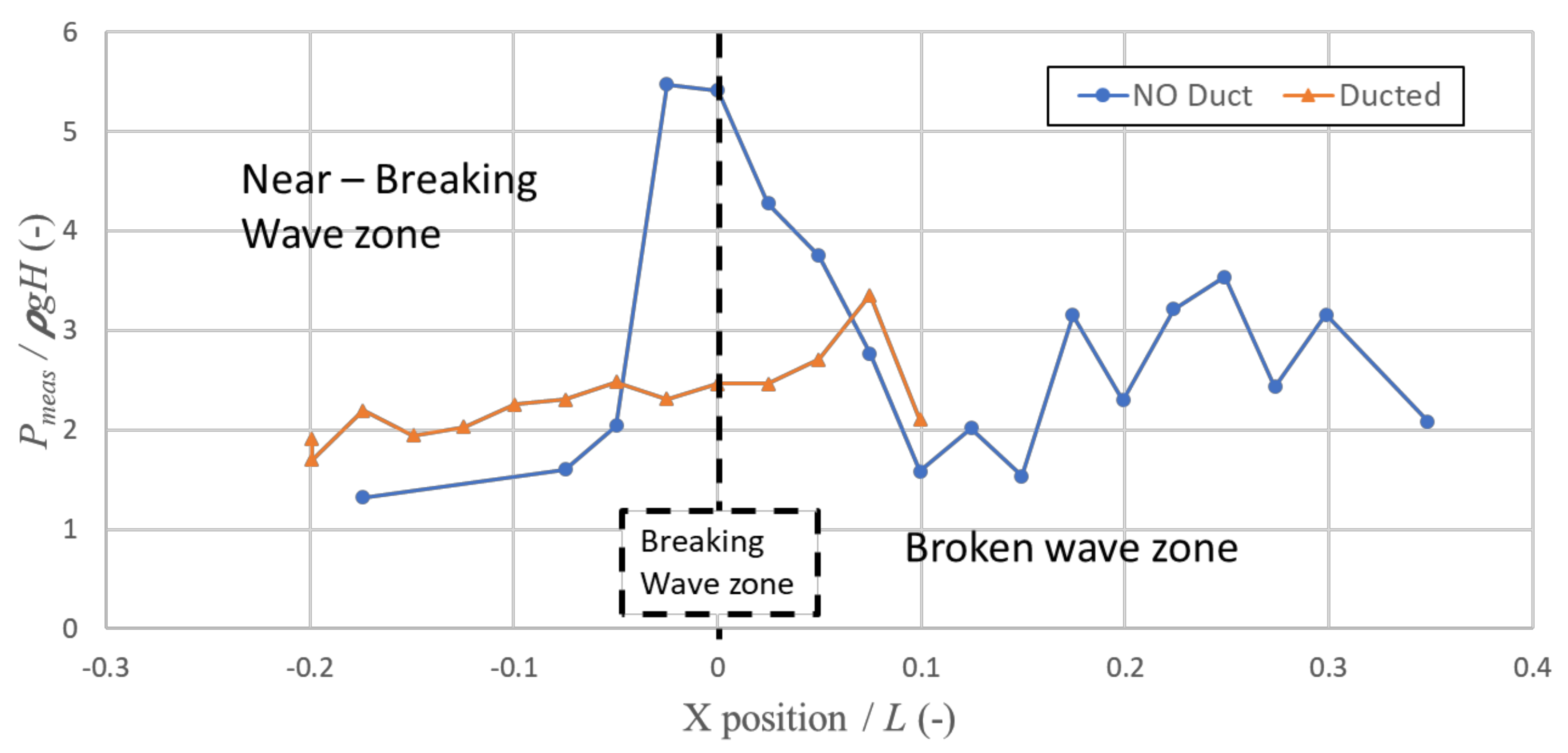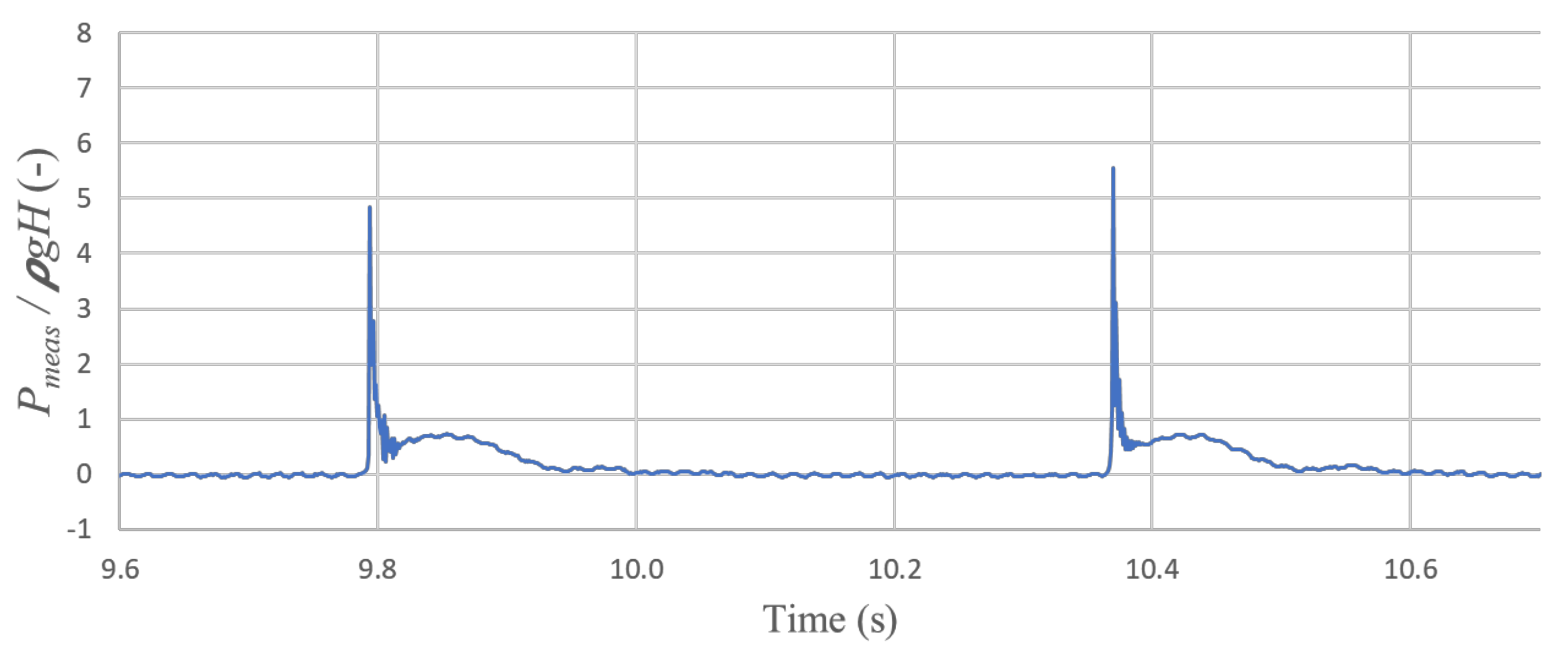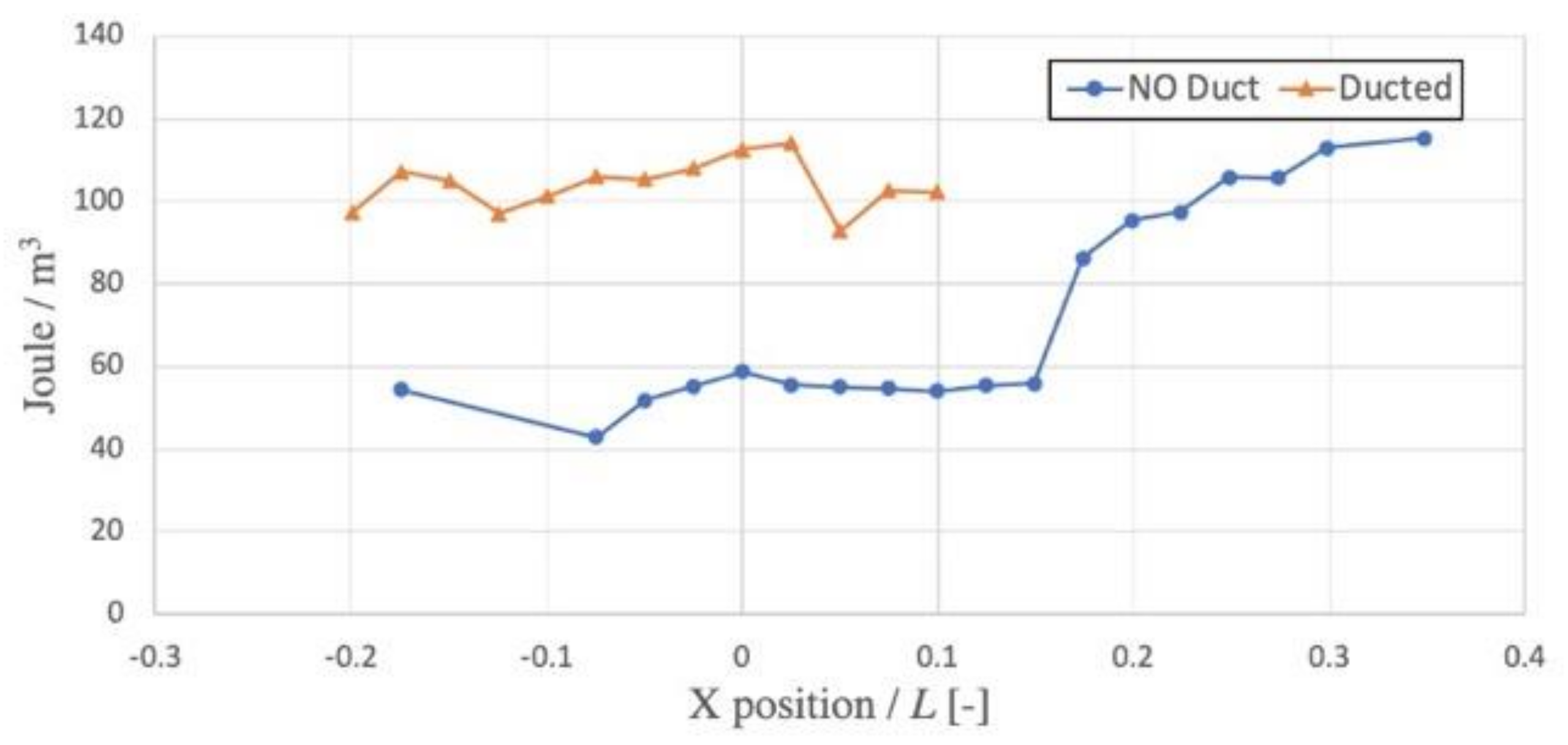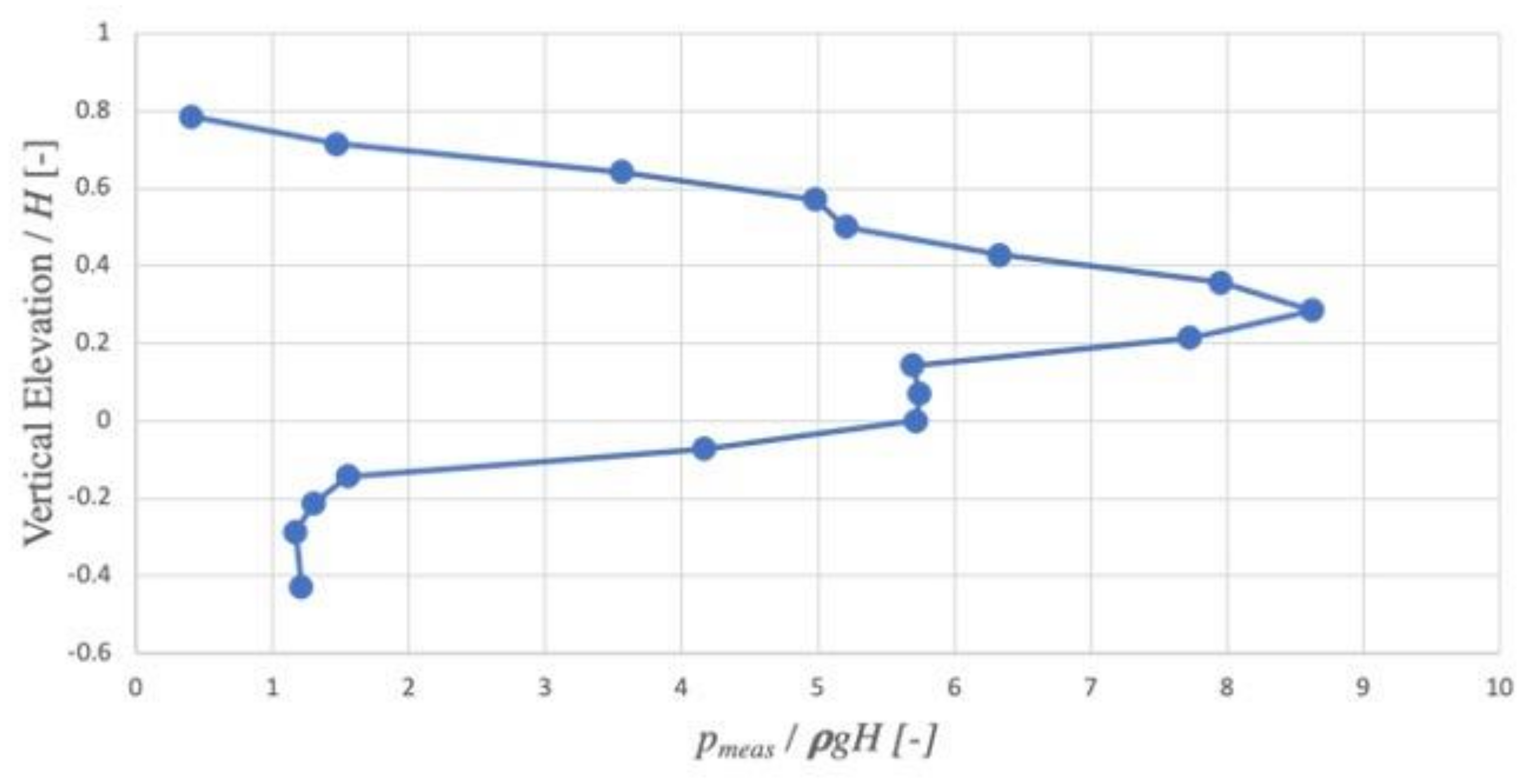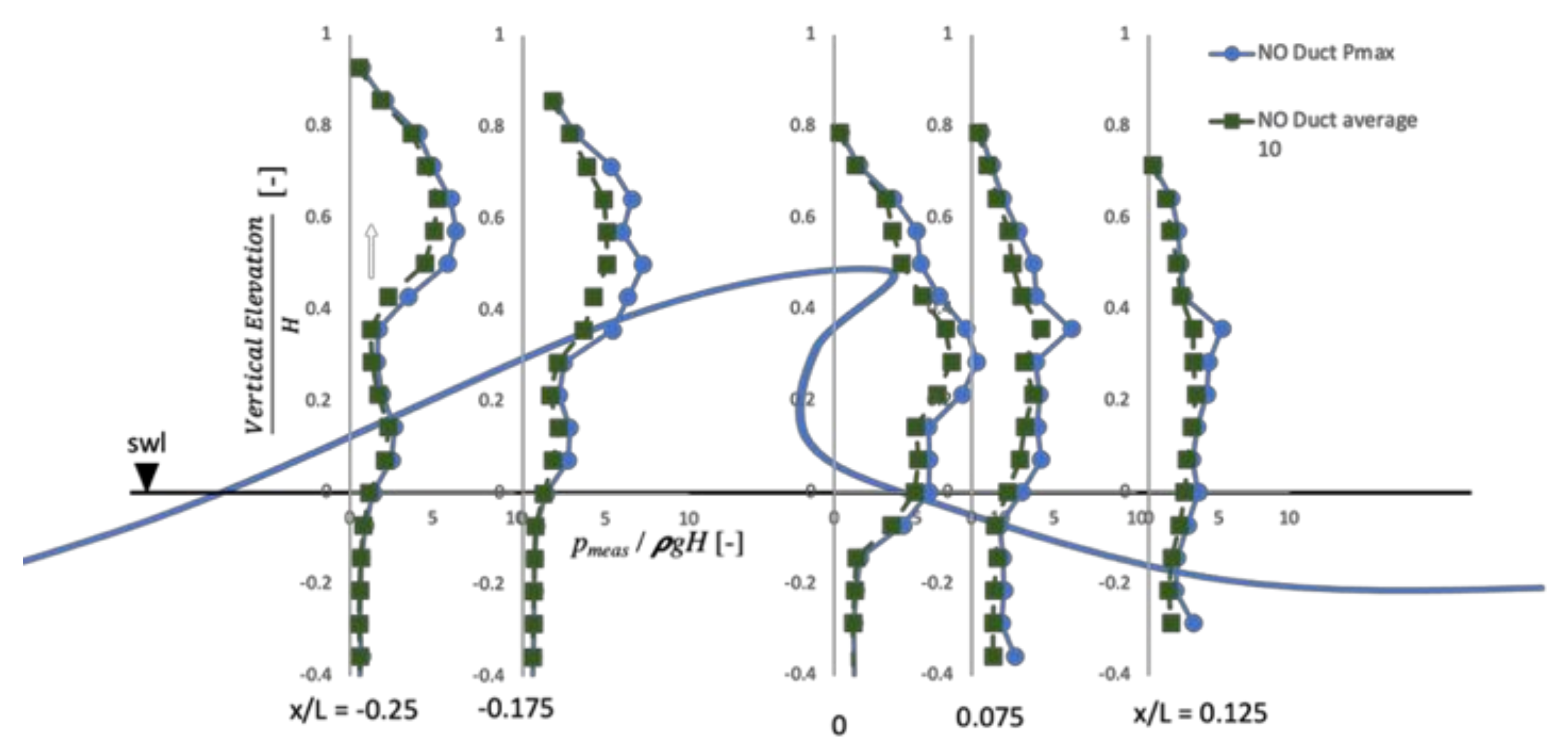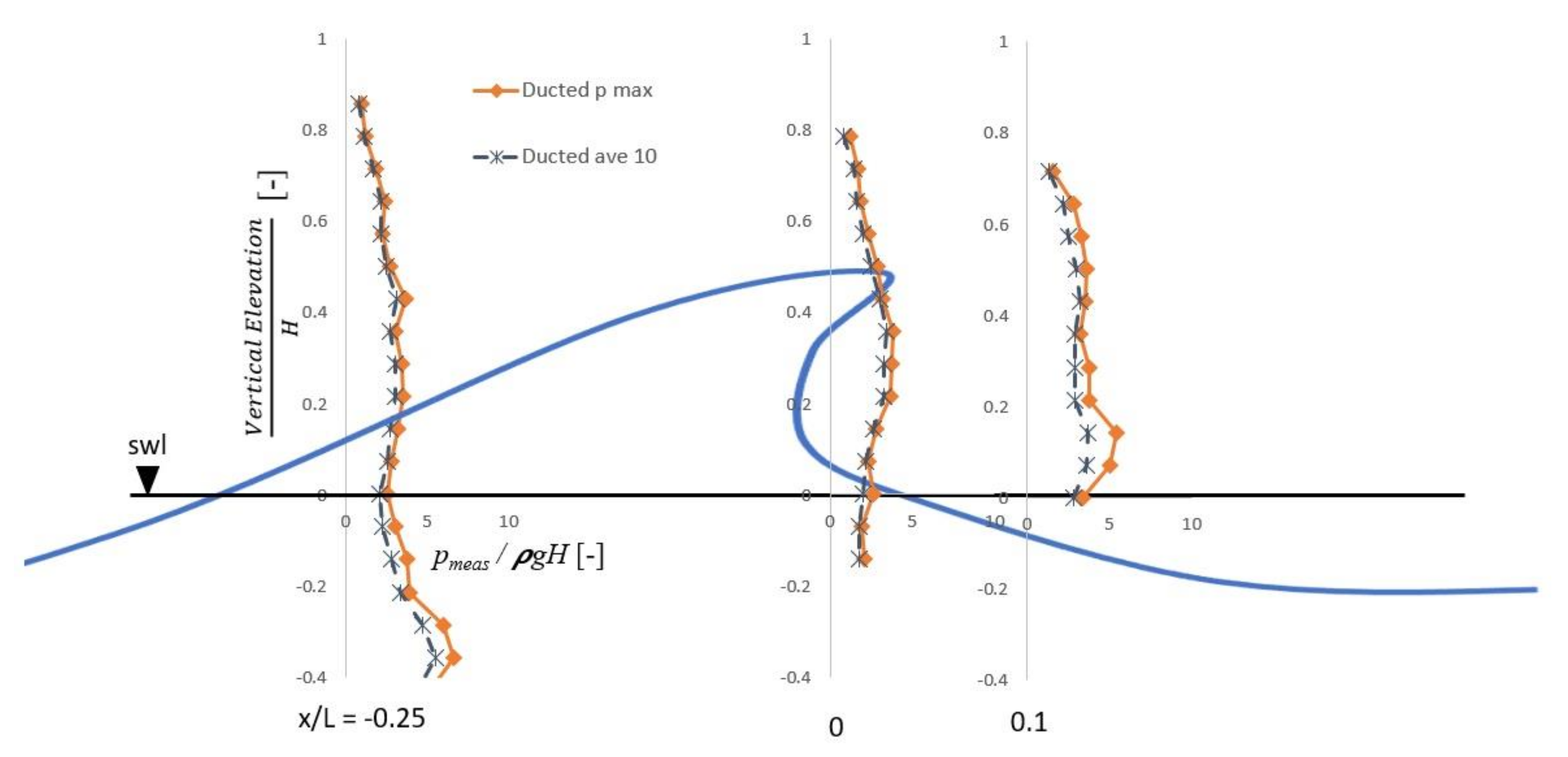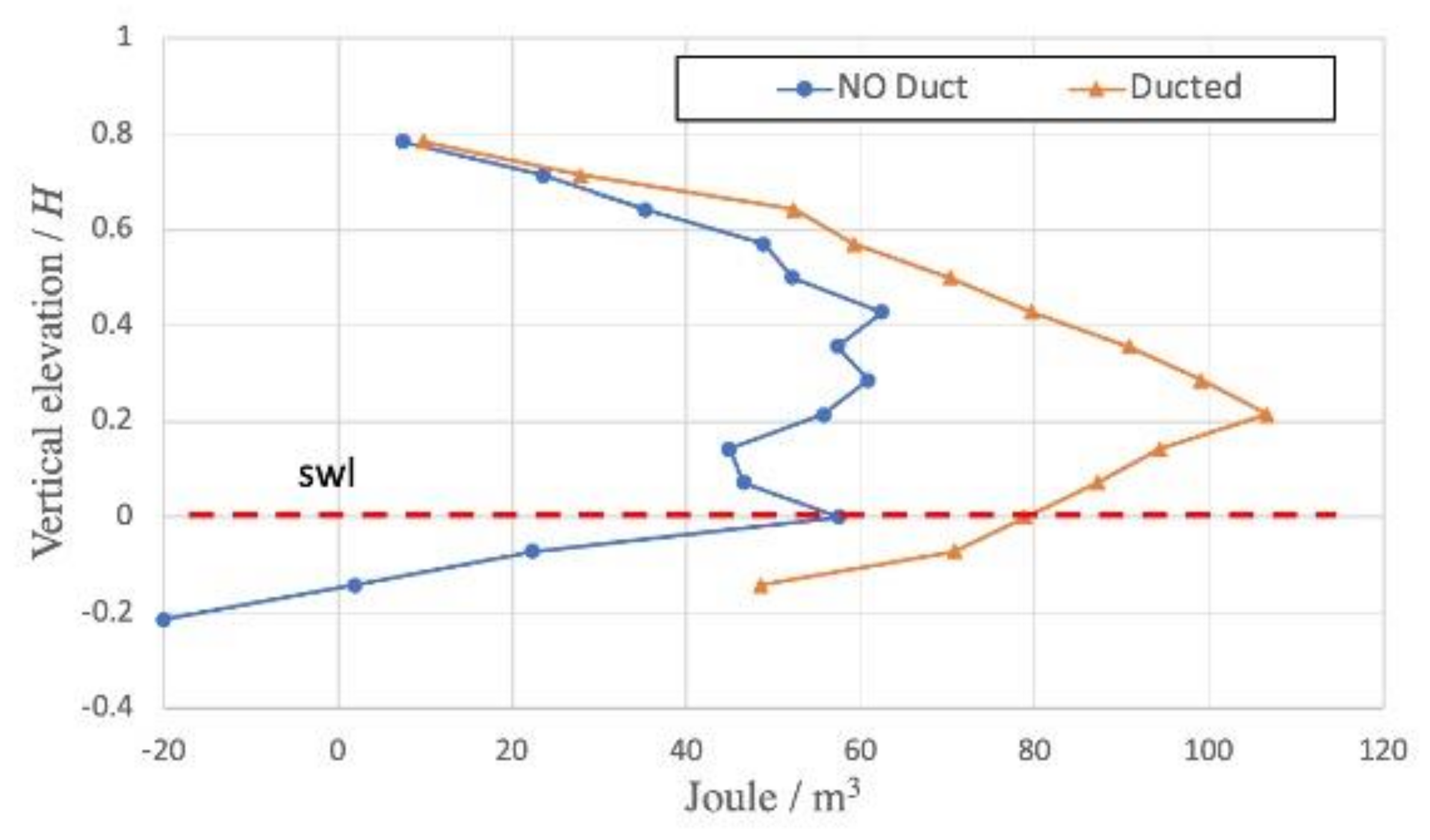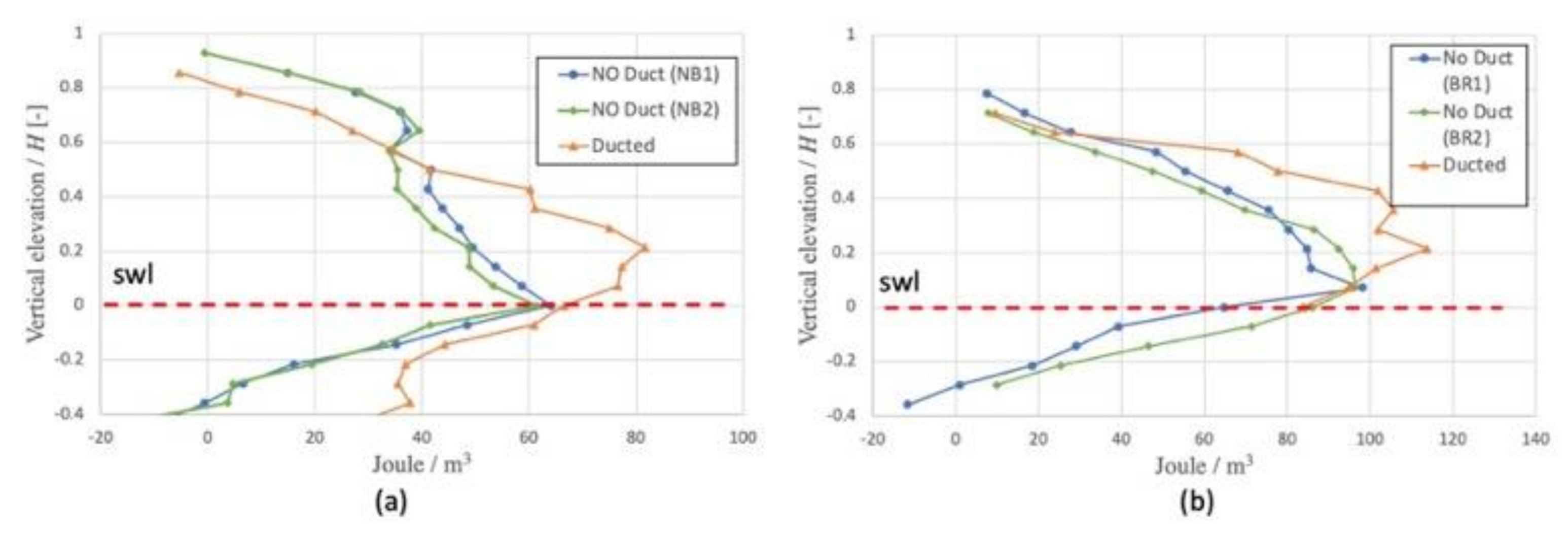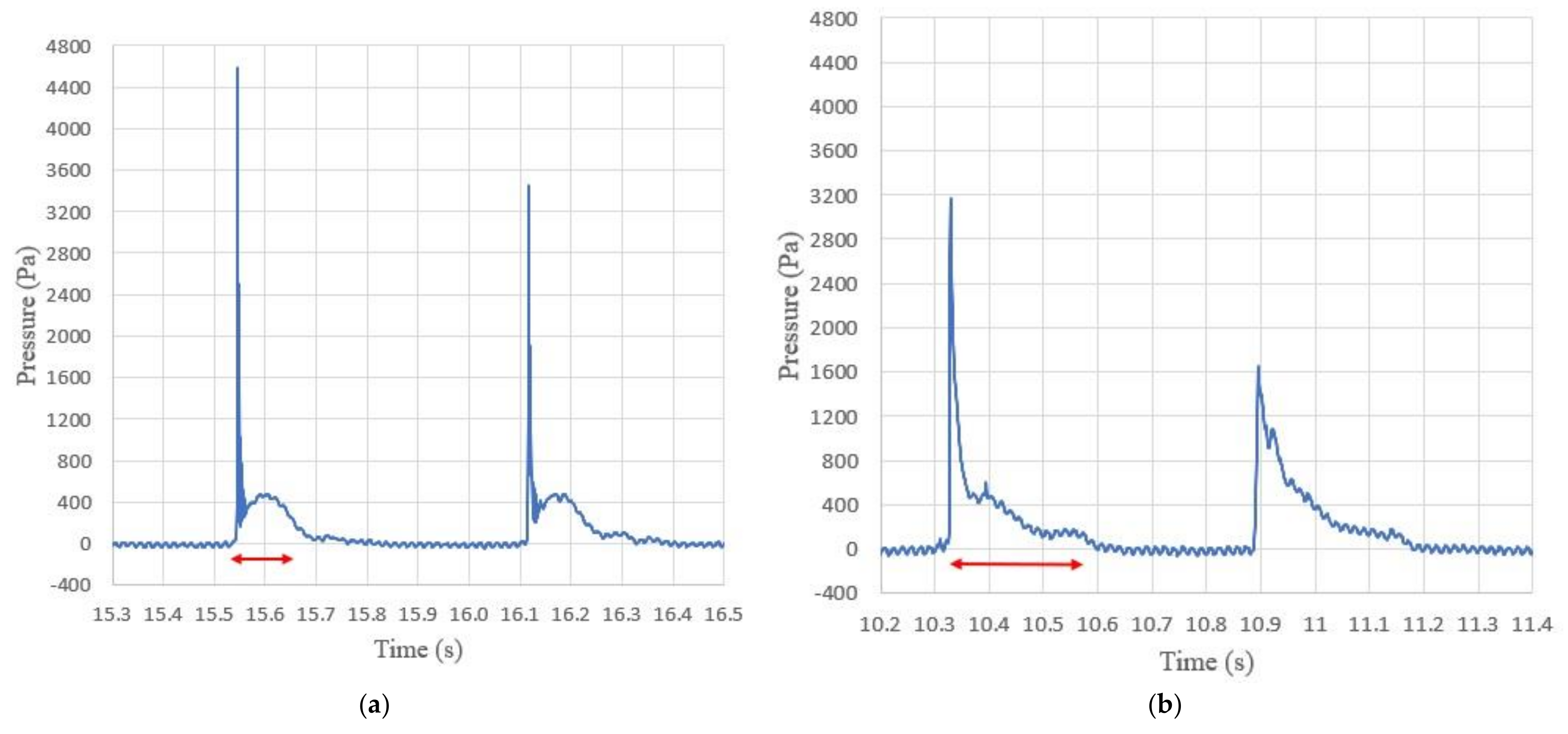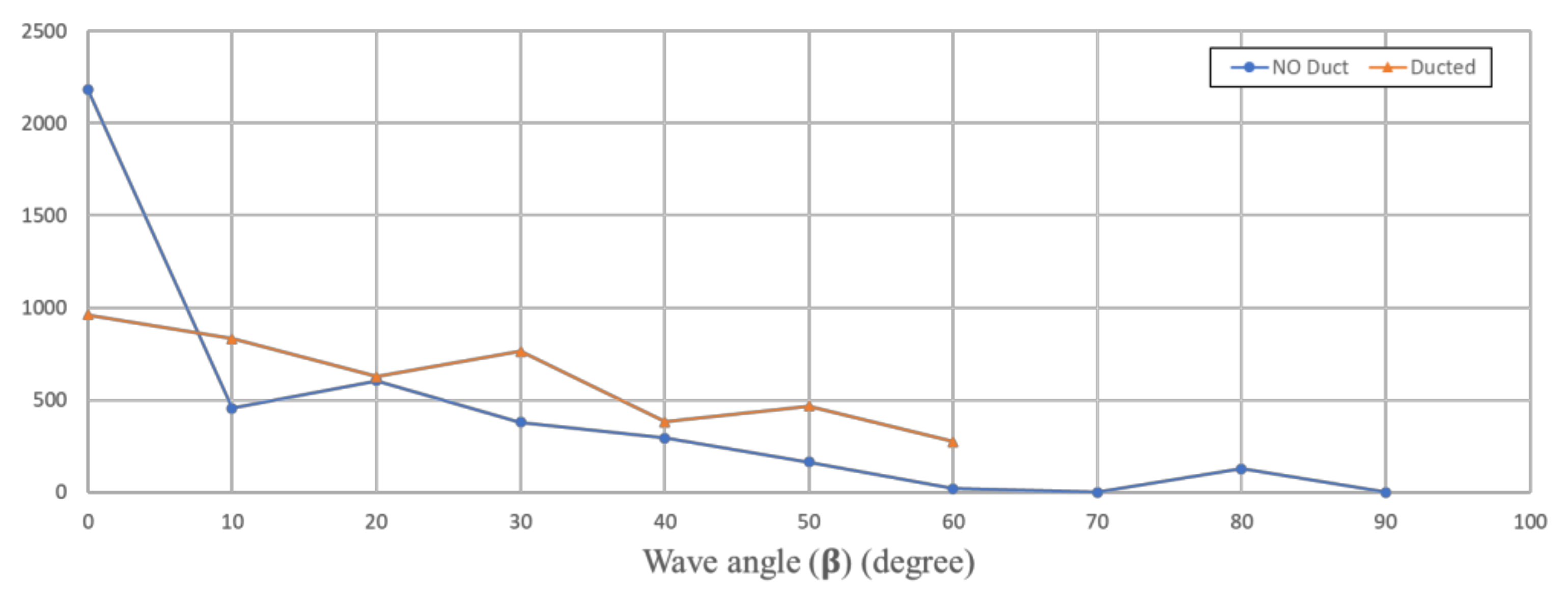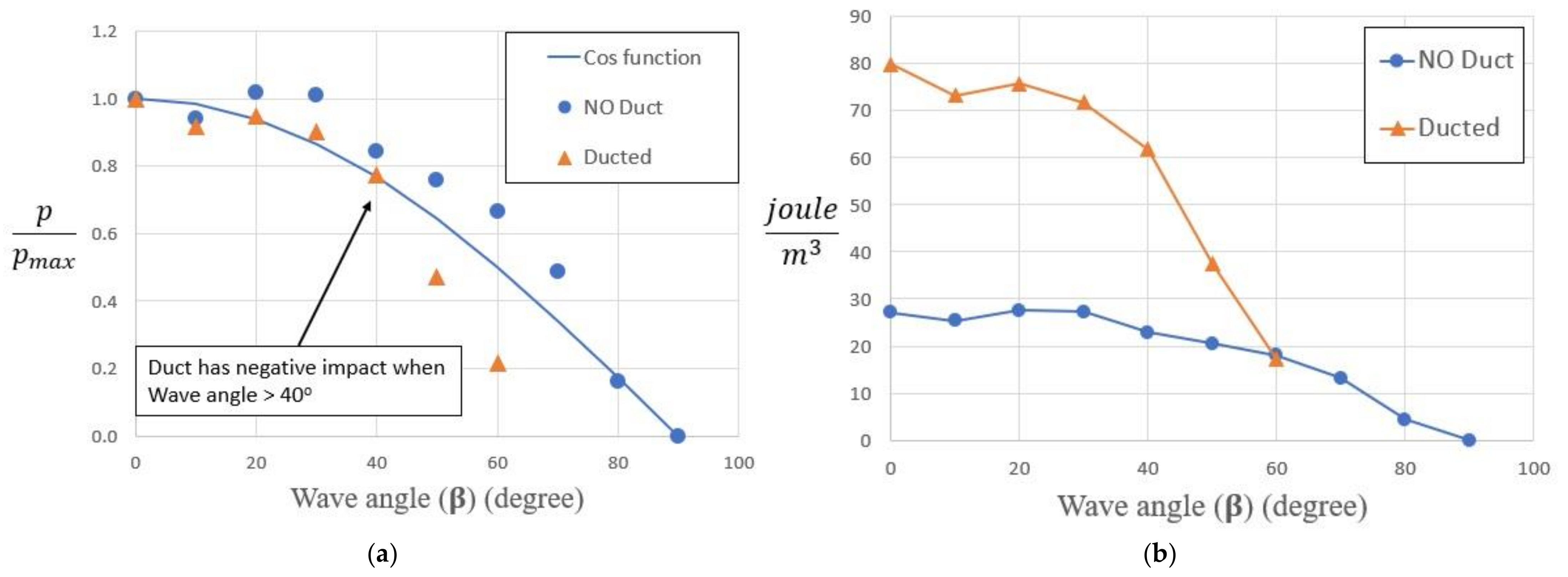1. Introduction
In 2020, the Japanese government pledged for Japan to be carbon neutral by 2050. This ambitious goal requires huge efforts from research and scientific communities to find more sustainable and renewable sources of electricity. It is estimated that Japan has up to 260 TWh/year of ocean energy within its reachable offshore (30 km off the coastline) [
1]. That is roughly 40% of the country’s total electricity consumption per year and thus could provide a major contribution to this carbon-neutral goal. Takahashi and Adachi [
2] estimate that around 7 kW/m of power hits Japan’s coastline every year. Sasaki [
3] further analyzed long-term wave data across Japan at 25 different locations from 1980 to 2009—and found that there was an increasing trend of wave energy, especially around Okinawa Prefecture, by about 0.4 kW/m over the next 30 years. This data increases the appeal of using wave energy as a source of electricity.
There have been many attempts to harvest energy delivered by waves over the years with main focuses on oscillating water column (OWC) type and point absorber type wave energy converters (WEC), which deployed in the shallow water part of the ocean. In principle an OWC device takes advantage of the hydrodynamics changes induced by passing waves to oscillate the water column inside the OWC structure. This movement then forces the air to inhale into and exhale from the chamber. The power is generated by placing a power take-off (PTO) mechanism on the airways. In 2001, a groundbreaking OWC type WEC called Land Installed Marine Power Energy Transmitter (LIMPET) was installed in the Isle of Isla, Scotland, marking the first WEC device to be connected to the main power grid in the UK [
1,
2,
3]. Together with the development of LIMPET, another near shore stand-alone OWC project was also started at Pico in the Azores, Portugal. The single 12 m × 12 m cross-section water column was rated at 400 kW and was completed in 1999 [
4]. After almost 20 years of operation, the project was finally concluded in 2018 due to partial failure at the base of the structure as stated by WavEc’s latest press release. While generating less power than designed, both LIMPET and Pico power plant managed to show the reliability of wave energy. LIMPET, despite only generating 20% of its design capability, was operating for about 98% of its lifetime, with minimum down time, and was shown to be robust against any weather condition [
5]. Pico power plant, furthermore, managed to produce energy output constantly for 400 h in November 2012 [
4].
Previous experiences in designing, constructing, and operating a stand-alone wave energy converter have shown the cost to be very high. The latest report shows electricity generation costs of about EUR 330–630 per MWh, which is significantly higher than other renewable energies such as wind and solar power [
6]. Because of this, recent developments concerning combining a much-needed coastal defense structure, such as breakwater or seawall, and a wave energy converter have been growing in popularity. In Europe, the construction of the Mutriku Wave Energy plant at the Port of Mutriku, Basque Country, Spain, marked the world’s first grid connected integrated wave energy converter (WEC) in a vertical breakwater. This concept allows the cost to be split between energy generation and coastal defense. Furthermore, the way energy was harvested in this project does not interfere with the structure’s ability to protect the coastline and has a minimal impact on the original design of the breakwater [
7]. Despite careful planning, however, the construction suffered from severe storm damages, which caused some of the WEC chamber to be exposed and partially destroyed. Subsequent studies found the structure experienced operational limits of wave pressure during each storm at least six times [
8]. This emphasized the difficulties and the risk of installing such structures in a very energetic sea condition. Europe’s newest attempt at exploiting the wave energy to produce electricity is the currently constructed resonant wave energy converter (REWEC) or U-OWC project at the Port of Civitavecchia since 2011 [
9,
10,
11]. The concept for U-OWC is very similar to conventional OWC, with an additional wall in front of the front wall forming a “U” shape. Early experiments showed that this configuration may lead to a higher absorption rate at a wider wave frequency range [
12]. At the same, it is important to note that adding a wall that is separated with the main structure could only increase the difficulty and the cost of construction.
In addition to the fixed structures discussed so far, floating WEC has also been extensively explored over the past 20 years. Japan’s first floating OWC concept was tested in Gokasho Bay, Nansei Town, in September 1998. During open ocean testing, the so called “Mighty Whale” device managed to endure a typhoon induced sea condition with significant wave height and a period of 5.57 m and 12.5 s [
13]. Unlike a standalone OWC device, a floating WEC can have two peak frequencies due to the movement of the water column chamber and the water column inside the chamber. This allows floating OWC devices to work better at a wider operating range [
14]. Furthermore, due to its mobility, the device can be towed to a more energetic part of the ocean, although at the same this will increase the difficulty and the cost of the installation. This was proven by the failure experienced in both the GreenWAVE in Australia and the Ocean Swell Powered Renewable Energy 1, OSPREY 1, in Scotland. The former was a 1 MW floating WEC device built by Oceanlinx in 2014 and intended to be placed at Port McDonnell. Unfortunately, the device was damaged beyond repair during transport from Port Adelaide and failed to be installed [
15]. The latter device, furthermore, experienced a similar fate. OSPREY 1 was built and installed near Dounreay, Scotland, in 1995, before it sank to the bottom of the ocean after being caught in the 3 m swell of Hurricane Felix, as reported by the Heralds [
16].
Learning from past projects, several main obstacles faced by a deployment, or an implementation of a wave energy converter project were the production and installation cost, harsh environmental condition, and relatively low energy absorption efficiency. Aspects like the sheer size of the wave energy device and the difficult-to-reach deployment location were some of the biggest contributions to the high installation cost. These problems may be mitigated by utilizing simpler design, smaller size, and closer installation location. Based on these considerations, the Okinawa Institute of Science and Technology Graduate University (OIST) WEC design was design to be placed in the shallower part of the ocean where the waves sometime break. Because of this, it is better for the device not to be designed for very harsh sea conditions, but rather moderate sea conditions with typical significant wave heights of 0.75 m to 1.0 m.
When designing an effective wave energy extractor, one must consider the wave height, wave period, and direction of the wave [
17], as an unfavorable wave angle could reduce the device’s performance by as much as 75% [
18]. This condition is important as [
19] argues that by 2042 the long wave, where the peak wave period
Tp > 8 s, will become more frequent, so much so that the wave energy converter’s design made under current wave conditions may become less efficient in the future. This is critical as other coastal structures, such as seawalls and breakwaters, are designed to last centuries.
Unlike deep-water waves, once a wave travels to a shallower area, the wave diffracts due to the interaction between the wave and the seabed. This action forces the direction of the wave to be parallel with the shoreline. Furthermore, around the breaking wave zone area, the wavelength shortens, and the wave height increases due to shoaling, before it ultimately breaks. Following the linear wave theory, in shallow water, wave phase velocity also becomes independent of the wave period (
T) and both the group velocity and phase velocity become similar. Thus, wave characteristics become much more uniform in shallow water surf zones, as they are less affected by deep-water sea characteristics. Due to this consideration, one can speculate that a device designed for a narrower band of wave characteristics when placed in this area may enable the device to work more efficiently during operational hours. The shape of the wave, furthermore, is slightly elongated as the water around the still water level travels faster than water near the seafloor. This condition means that the horizontal water flow is faster compared to the vertical motion of the water; therefore, a widely available horizontal axis-type turbine would be suitable to capture wave energy. This is the idea behind the breaking wave zone Wave Energy Converter (WEC) developed by the Okinawa Institute of Science and Technology Graduate University (OIST) [
20]. Furthermore, since it is less likely to be affected by deep-sea waves, the same design may work well in many locations, as long as there are enough waves (energy) to justify the production and installation cost.
To take advantage of the breaking wave vortex, the diameter of the OIST WEC’s turbine is limited to the wave height. This relatively small dimension means that the OIST WEC is relatively cheaper to fabricate, easier to install, and can be located closer to the shore, thus reducing the cost further in both installation and maintenance, and in line with the lesson learned from the failures of WEC projects in the past. The power generator itself consists of a five-blade turbine which is directly connected to a permanent magnet generator. It is expected that the turbine will operate in harsh environments, so this configuration is expected to be able to withstand the breaking wave impact. To minimize the possibility of sea water entering the generator, the inside of the generator is filled with pressurized oil. More details of the turbine design and considerations can be seen in [
21].
To select a suitable design for the intended testing location, an onsite wave measurement was done at the Port of Seragaki in October 2015. The measurement was recorded using five Teledyne RD Instrument Acoustic Doppler Current Profilers (ADCP) called workhorse sentinels. The recording frequency was 2 Hz for one month. It was found that the Port of Seragaki, Okinawa, has a horizontal velocity between 1.8 m/s to 3.5 m/s at a depth of 0.4 m. Furthermore, the significant wave height (
Hs) of the location was also measured to be 1.7 m. For more details on this research, please see [
22].
Based on the sea characteristics, the selected turbine was 700 mm in diameter and rated to generate 12 kW at peak power. The turbine characteristics are summarized in [
23] and a preliminary field test on a 1:2 scale physical model was done in Maldives. The Maldives location was chosen due to its relatively uniform wave characteristics throughout the year (
Tp = 9.8 s; 1.0 m <
Hs < 2.0 m for 68% of the year) [
24]. Two half-scale physical models of the turbine tested here were located at the same distance from the shore, about 10 m distance between each model. Each model, however, was mounted at a different height. One was about 1 m from the seabed and roughly located just above the still water level during low tide. The other was mounted about 1.5 m from the seabed, located just above the still water level during high tide. Due to the impulsive nature of breaking waves, the installation work of the WECs brought a significant challenge. First, a 75 cc two-cycle gasoline engine core drill was utilized to drill four 110 mm diameter holes on the seabed, at the designated location. Each hole had the depth of about 400 mm. Then the mount sockets were inserted into the holes with the gap between the hole and the socket filled with 2–3 mm diameter ceramic balls and epoxy cement. Once the cement was dry and the socket was strongly attached to the ocean floor, the half scale turbine generator was towed to the location by boat and fastened to the socket. To store the generated electricity momentarily, a set of 24 electronic double layer capacitors was used and connected to a set of LED lights to lighten the monitoring room. The experimental results showed that the turbine installed around the low tide still water level produced, on average, more power than the one located in a higher position. The peak power measurement, however, showed that the higher location had higher peaks, albeit with longer non-productive periods. The details of the experiments, along with the novel monitoring system of the half-scale physical model testing in Maldives, can be read in [
25,
26].
Full-scale turbine testing of the turbine generator was done in November 2018. Two full-scale 0.6 m diameter OIST WEC turbines were installed at about 10 m landward from the half-scale turbines with the same 10 m distance between them, using the same installation method of the half-scale experimental campaign. This location was selected based on video observation of the breaking wave location. The center of the turbines was located 0.6 m above the seafloor. This allowed the bottom of the turbines to reach the low tide still water level. For reference, the difference between low tide and high tide in Maldives during this experiment was around 0.8 m, so it was expected that the turbines would be fully submerged during high tide. It is also important to note that half-scale data revealed that energy was still generated while submerged. The full-scale generator showed a lower turbine RPM when compared to the half-scale WEC’s model, while the power produced in total was larger.
Figure 1 shows the relationship between the turbine rotation speed in revolutions per minute (RPM), against the voltage output of the generator. As can be seen from the figure, the full-scale (blue triangle) line has a much steeper gradient when compared to the half-scale (orange circle) result. For more detailed analysis, please see [
27].
Based on the Maldives experiment, it was found that current devices are still unable to harness the breaking wave energy optimally [
28]. The preliminary observation showed that most of the time, the very fast and turbulent water and air mixture of a breaking wave hit the turbine when it was not rotating (still) and passed before it could absorb all of its energy. Because of this, a duct was incorporated into the turbine design to act as a concentrator of the water flow toward the turbine and slow down the incoming water flow. Furthermore, these breaking waveloads on a still turbine led to a high impact pressure experienced by the turbine’s blade. Bagnold [
29] speculates that high impact pressure occurs due to air trapped and compressed inside a body of water. Reference [
30] further shows that a small bubble may exacerbate this impact pressure peak. Due to this, removing the bubble may be beneficial in improving the survivability of the turbine, so the duct is expected to also suppress the incoming near-breaking wave and reduce the aeration of the breaking wave.
There are two parameters of the duct design that need to be taken into consideration: The inlet dimension and the duct length. In order to make sure that most, if not all, of the water will enter the duct, it needs to be at least twice the breaking wave height. The breaking wave height can be calculated using
as suggested by [
31], where
denotes the peak period wavelength in the water depth
h, and can be calculated using
where
denotes the gravity acceleration and
Tp denotes the peak period of the significant wave. Furthermore,
is the reflection constant depending on the overall reflection coefficient of the beach
Cr and can be calculated using
Unfortunately, getting the necessary parameters in the real ocean was difficult. Because of that, early exploration on the design of the duct was done numerically by recreating Maldives’ Kandomaa Island bathymetry in a numerical wave flume. The simulations were calculated by Free-Surface Flow Solver for Gravity-Driven Hydraulic Events, or SURGE, which is a computational fluid dynamics solver for free-surface flow, modelled using the volume-of-fluid method (VOF) based on the finite difference method. The results show a breaking wave height (
Hbr) equal to 1.0 m when the incident wave height at water depth (
h) equal to 5 m is
Hinc = 0.75 m, which are the typical wave condition at the designated location. More details of the experiment can be seen in [
32]. Based on this result, the inlet dimension of the duct is selected to be two times the
Hbr, or a 2.0 m by 2.0 m rectangle, where the still water level is located at the center of the duct. This should guarantee that most, if not all, of the water of the incoming wave enters. A contraction factor of 9 is selected to increase the flow velocity and increases the performance of the device, leading to a 0.67 m by 0.67 m rectangular outlet dimension. To decide the length of the duct, one needs to consider the distance a breaking wave travels from the moment it reached the breaking wave height (
Hbr) until the wave is broken. One can imagine that this distance is similar to the diameter of the circular air pockets, which form when a wave is breaking, and can be approximated by
as proposed by [
33], where
D denotes the characteristic linear dimension of the circular air pockets formed by breaking wave with breaking wave height
Hbr. Assuming
Hbr equals 1, as predicted by the numerical simulation, the minimum duct length should be
D = 0.26 m. To be sure that the duct will be able to capture the breaking wave, the early duct design was chosen to be about 20 times that number, to be 4.0. In addition to the breaking wave height analysis, two design configurations were tested in the numerical wave flume, using the same numerical method, as reported in [
34]. The experiments compared the total pressure (
and the effective pressure (
at the duct outlet, but only if the breaking wave occurred in the middle of the duct. Effective pressure is the total pressure with the gravitational potential power removed because the gravitational potential power cannot be captured by the electric generator. The first duct design is a 4 m long taper duct with 2.0 m × 2.0 m rectangular inlet and 0.67 m × 0.67 m rectangular outlet (
Figure 2a), while the second duct design has a 2.0 m straight tube with rectangular 2.0 m × 2.0 m cross-section and an open roof, followed by a 2 m long taper configuration with 0.67 m × 0.67 m outlet dimension (
Figure 2b). The results showed that the first configuration (
Figure 2a) may increase both the
Ptot and
Peff up to 1.5 times the second configuration.
Based on the numerical results shown in [
34], the first configuration was selected for a preliminary half scale field testing which was done in Maldives (see
Figure 3). Early prototypes of the duct design were made from aluminum plates with a rectangular cross-section as shown in
Figure 3a. The aerial view of the initial testing using the painted prototype (corrosion prevention) in Maldives can be seen in
Figure 3b, and most of the sea water enters the duct as expected. The half-scale turbine was then mounted at the outlet of the tapered duct to measure the power generated and to compare it to the bare turbine configuration.
The measured voltage generated by the half-scale turbine and duct configuration showed an increase by a factor of 2.5 when compared to the bare turbine as reported in [
26]. Theoretically, this may lead to six times more power being harvested just from adding the duct. Unfortunately, due to the very high breaking wave impact, the corner wall of the duct failed with the water leaked. Furthermore, the turbine mount attached at the outlet bent. Because of this, both designs shown in
Figure 2 were combined for the final design. While the outlet pressure is expected to be lower, it is expected that the device will be able to hold the incoming breaking wave pressure.
Figure 4a,b show the duct design based on the lesson learned from preliminary testing in Maldives with dimensions shown in mm; it is the one being considered in current study. The length is shortened to 2.4 m to simplify the fabrication, thus further reducing the cost associated with the installation. This length is about 10 times the minimum length calculated using Equation (4). Furthermore, data also show that a previous design’s contraction factor may lead to a significant amount of water being reflected seaward, so the contraction factor is lowered to 2.8. Furthermore, a rectangular cross-section, although easier to fabricate, may lead to a pressure concentration at the corner, so a circular cross-section is considered for the current study.
In summary, the current study aims to characterize the influence of the most recent duct design to the overall performance of the OIST WEC device, by means of
Figure 4a quantifying the increase in energy exposure to the turbine by adding the duct into the WEC design and
Figure 4b observing the impact of the directionality of the incoming wave to the performance of the ducted WEC design when compared to a bare turbine design.
2. Methodology and Experimental Apparatus
To further observe the effects of the current duct design to the overall performance of the device, small-scale physical model experiments were done at the OIST’s wave flume facility. The wave flume is a 1 m × 0.5 m × 0.2 m and is made of a 10 mm thick perplex board to enable multi-angle observations. A paddle-type wavemaker is installed at one end and wave-absorbing sponges are placed at the other end of the tank. The paddle is connected to a step-motor which is operated by an Arduino® board using a computer. The wave generator is tuned to a single monochromatic wave characteristic with a nominal wave height (H) equal to 0.07 m and an incident wave period of 0.57 s. The wave height is chosen based on real wave conditions in Kandooma Island, Maldives, and scaled down following Froude similitude law. For the wave period, however, the flume was unable to produce the scaled down version of Maldives’ significant wave period. Nevertheless, because this study compared the pressure measurement with and without the duct, it is safe to assume that by keeping similar wave conditions for both the bare turbine configuration and the ducted turbine configuration, the results should be comparable with the one that used the appropriate scaled down version of the wave period of the real sea in Maldives. The wave period is selected as 0.57 s, which is the largest wave period the wave generator can produce at H = 0.07 m.
The simple schematics of the flume with the beach installed can be seen in (a) with the dimensions shown in mm. Here
h denotes the water depth at various bare turbine and ducted turbine configurations and the value of
h can be seen in
Table 1. The beach bathymetry installed is loosely based on Kandooma Island beach bathymetry. The breaking wave’s profile at the breaking location generated by the monochromatic wave can be seen in
Figure 5b with the profile highlighted with a dashed red line. The wave height generated during the experiment was measured using a high-speed camera located about 230 mm from the duct model, as can be seen in
Figure 5c. The camera position was maintained to be perpendicular to the inlet of the duct model in order to minimize error due to parallax. The flume and camera set up for the experiment can be viewed in
Figure 5d.
The 1:20 scale of the duct design can be seen in
Figure 6a, with the dimensions shown in mm. The small-scale physical model made from acrylic tube is then mounted onto the extruded aluminum holder and fixed into the position using C-clamp, see
Figure 6b. This small-scale physical model design consists of a straight tube, followed by a nozzle-like chamber following the one illustrated in
Figure 4. The small-scale physical model of the duct is then placed at various positions relative to the location of the breaking waves.
To measure the wave pressure as experienced by the turbine, a P-8300-501G-10 series made with a Nidec–Copal pressure transducer (PT) was placed at the outlet of the duct. The pressure transducer can measure up to 49 kPa with a response time of about 2 ms. The sensor has a diameter of 20 mm which is suitable to simulate the swept area of the scaled-down version of the turbine (about 29 mm). The pressure sensor is placed by itself to simulate a bare turbine configuration and placed at a 10 mm distance landward from the outlet of the duct to allow water to flow past the PT with minimum water reflection. This is also the scaled down distance between the duct and the turbine at full scale.
To get an accurate wave height measurement, a 240-fps high-speed camera was utilized to record a slow-motion image of the wave during experiment. A previously taken measurement grid image placed on the wall of the flume from the same camera angle and location is then superimposed to the recorded video to measure the incident wave height. Because the pressure measured in the current study is only focused on the landward wave pressure, the reflected wave is omitted in the current study and the reflection analysis was, consequently, not done.
The second part of the experiment is to explore the influence of wave angle on the performance of the ducted OIST WEC. Wave angle is defined as the angle between the direction of the incident wave to the normal direction of the WEC device. Naturally, a significant wave angle will reduce the wave energy exposure to the turbine. Contrary to a bare turbine, a ducted turbine should be more sensitive to a big wave angle, as the angle between the incoming wave and the inlet of the duct could potentially prevent the water from entering the duct and flow through the power take-off. Due to this consideration, it is important to extend the characterization of the duct to include the directionality characteristics of the device.
Due to the wave flume and wave generator limitation, generating an angled wave is not possible. So, to do the directional exploration, 3D printed holders were utilized allowing a multiple angle movement to the physical model at the same location.
Figure 7a illustrates the holder design using Solidworks
® with each gear representing 10° of rotation. The printed product made from tough polylactic acid (PLA) is shown in
Figure 7b. This rotating mount is placed on the extruded aluminum holder of the duct as shown in
Figure 6.
To record the pressure measured by the pressure transducer, a Graphtech
® midi logger HV GL2000 series is deployed to record the pressure measured by the pressure sensor. The data recording frequency is 1000 Hz for a duration of about 15 s to 20 s with at least 10 clear breaking waves recorded. Furthermore, the location of the duct and the pressure transducer relative to the breaking wave position (
x/
L) and the breaking wave height (
y/
Hbr), the corresponding water depth
h, and the incident wave angle β used for the current study are shown in
Table 1. For the bare turbine case (ND), the
x/
L and
y/
Hbr location indicates the location of the pressure sensor, while for the ducted case (DT) the
x/
L and
y/
Hbr location indicates the inlet of the duct with the pressure sensor located 10 mm landward from the duct’s outlet. Here, the
x/
L = 0 value indicates the location of the breaking wave, and the
y/
Hbr = 0 indicates the still water level.
